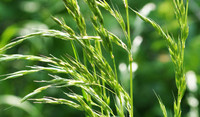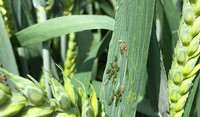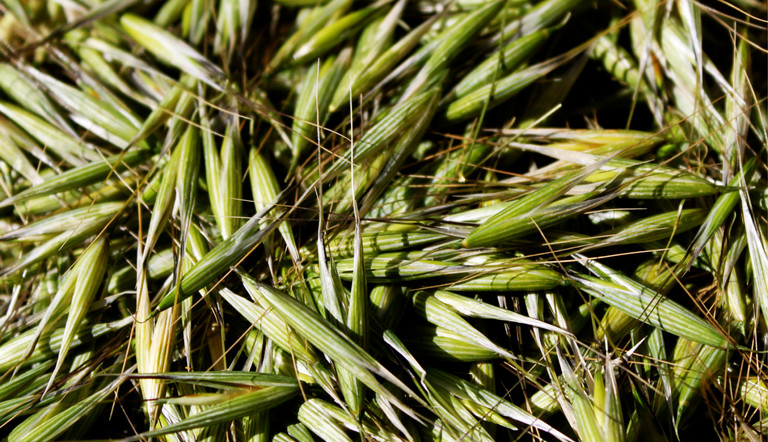
Wild oat control in cereals

With arable growers across the UK facing the challenge of the driest spring in almost 70 years, the widespread stressful growing conditions in spring 2025 are an unavoidable consideration in achieving the best possible results with TOPIK®, and with GS41, the latest practical timing for wild oat control, rapidly approaching, time is running out to ensure crops are properly protected.
Tank mixes are a useful option and there are many products that are physically compatible with TOPIK®. Unfortunately, some herbicide modes of action attractive to tank mix are not biologically compatible with fop and dim actives like TOPIK® and will lead to poor weed control. While TOPIK® can be tank mixed with ALS Inhibitors such as sulfonyl-urea herbicides (SU) herbicides when used at the full rate of 125ml/ha plus oil. DO NOT mix reduced rate TOPIK® with an SU. TOPIK® should not be mixed with hormone herbicides and must be used in sequence; wait 14 days from application of a hormone herbicide before using TOPIK®, or seven days after TOPIK® application before using a hormone herbicide.
One wild oat plant per m2 is capable of reducing cereal yields by as much as 1%.
The risk of resistance
Like many other weeds, the two main species of wild oats, Avena fatua and Avena ludoviciana (sterile oat) have developed varying degrees of resistance to a range of herbicide active ingredients.
Thankfully, this resistance is developing relatively slowly, but it is important to reduce the threat of further resistance by using a rotation of herbicide modes of action (ACCase inhibitors such as clodinafop and cycloxydim, fenoxaprop and pinoxaden and ALS inhibitors such as mesosulfuron).
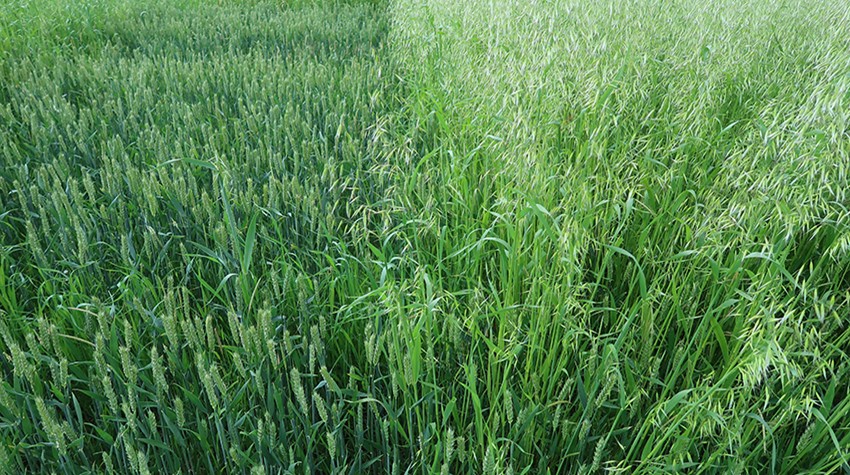
The power of TOPIK: treated (left) vs. untreated (right).
TOPIK® (240 g/L clodinafop-propargyl & 60 g/L cloquintocet-mexyl) is an effective option against both species of wild oat, but with a system of high pressure predicted to dominate for the next few weeks and wetter weather still some distance away, it is essential that any treatments are applied in line with the following best practice guidelines:
- Use an appropriate volume of water: beyond GS31 at least 200l/ha should be used.
- Apply TOPIK® during good growing conditions for the target weed as this will improve product uptake.
- Spray slowly (maximum 12pkh) and at a sensible boom height (50cm above the canopy)
- Select a nozzle type and angle to target weeds beneath the crop canopy.
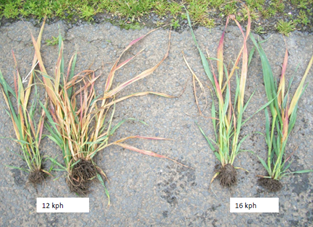
Reducing sprayer forward speed from 16kph down to 12kph helps to maximise wild oat control.
(Photo credit: Syngenta forward speed trial on TOPIK)
TOPIK® (240 g/L clodinafop-propargyl and 60 g/L cloquintocet-mexyl)
Controls wild oats, rough meadow-grass and gives moderate control of Italian rye-grass in wheat, durum wheat and triticale.

Optimum timing:
Wild-oats from 1 leaf unfolded up to flag leaf ligule visible.
Application rates:
0.25//ha
0.125//ha plus a suitable adjuvant (e.g. methylated seed oil)
Optimum weed control is best achieved when all the wild-oats have emerged and are actively growing in good conditions. More information here.
